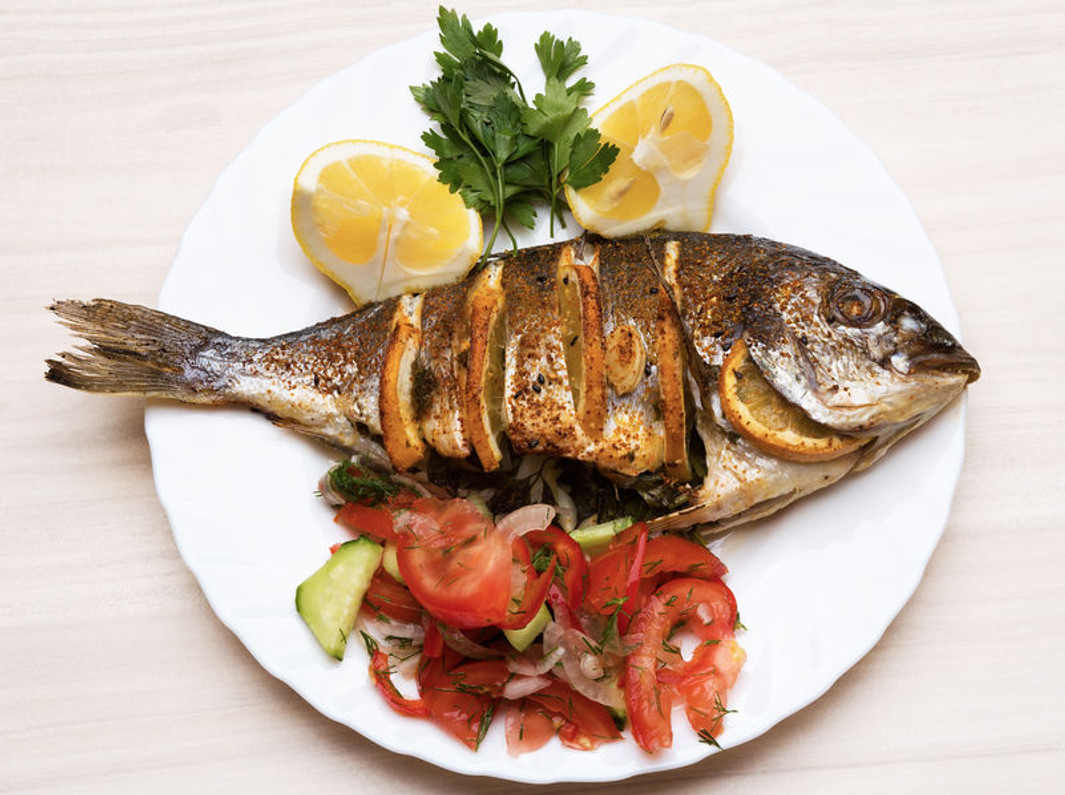What is the Healthiest Fish to Eat?
According to the American Heart Association, we should be eating one to two servings of fish per week to protect our hearts and health. Fish are rich in omega-3 fatty acids and a good source of protein, making them a great part of a healthy diet. However, the type of fish matters, too.
Some fish are raised and farmed in unsafe, inhumane conditions that make them iffy in the health category. Plus, some types of fish contain high levels of mercury that are especially harmful for pregnant women and children.
To ensure you choose the healthiest fish to eat, here’s what you need to know—plus the top seven types to consume.
How to Choose the Best Fish to Eat
It’s not just about the type of fish but also how and where that fish is raised and caught. The best fish will contain the following criteria:
- low levels of contaminants, including less than 216 parts per billion mercury and less than 11 parts per billion PCBs
- high in omega-3 fats
- wild caught or sustainably farmed
Look for these criteria in each fish product you purchase. If you buy your fish directly from a local fishery, ask about their standards. Seafood Watch also has a Consumer Guide that lets you search for sustainable seafood options in any U.S. state.
Top 7 Healthiest Fish to Eat
And now, to help you make the most informed fish-buying decisions, here are some of the healthiest fish to eat based on type, location, and sustainability.
1. Salmon (Alaskan Pink, Chinook, Coho, or Atlantic)
Look for wild caught salmon that has been eco-certified by the Marine Stewardship Council. The best choices are:
- Pink Alaskan or sockeye salmon from Washington caught with lift nets
- Freshwater coho salmon
- Chinook salmon from New Zealand
- Atlantic salmon from Salten Aqua Group or farmed salmon from Nordic Blu in Norway
- Farmed in indoor recirculating tanks
- Farmed in Maine, British Columbia, Scotland’s Orkney Islands, or the Faroe Islands
Farmed salmon is usually cheaper than wild caught, but it may be lower in omega-3 fats and other vitamins and minerals. If you can afford it, wild caught is typically the best choice.
2. Tuna (Albacore, Skipjack, or Yellowfin)
Look for albacore tuna (also known as “white tuna”) caught in the Pacific or Atlantic, yellowfin tuna caught in the Western and Central Pacific, and skipjack tuna (also known as “light tuna”) caught in the Eastern Pacific and Western and Central Pacific. Make sure they are caught by hand-operated pole-and-line, handline, or tolling line.
These are the best sources of canned tuna because they aren’t as high in mercury like other varieties. Light tuna is almost always skipjack, which is low in mercury.
Stay away from farmed or wild caught bluefin tuna.
3. Sardines
Sardines provide a great source of omega-3s and vitamin D. Plus, they’re inexpensive and tend to be healthier because you’re getting the entire fish.
4. Oysters
Like sardines, oysters are also a surprisingly good source of omega-3s as well as iron. Oysters are also good for the environment and a great option for those with ethical concerns. Since they do not have a central nervous system, experts have argued they may not feel pain like other fish and animals.
In addition, oysters feed off algae and nutrients in the water, helping to improve water quality, and they can provide food for other types of fish.
The best oyster varieties are farmed or Eastern oysters caught in Alabama, Florida, Texas, Delaware, Mississippi, Louisiana, or the Southern Gulf of St. Lawrence in Canada.
Avoid raw shellfish, especially if it’s from warm waters, as it can host illness-causing bacteria.
5. Trout (Rainbow or Lake)
Farmed rainbow trout in the United States are mostly from freshwater and “raceways” that provide a healthy diet and protect them from mercury and other contaminants. They are also one of the best choices from an environmental perspective.
If you’re going to have lake trout, look for those caught in Lake Superior’s Minnesota waters.
6. Mackerel
Most mackerel sources in North America are good choices. In sushi, mackerel is known as “saba.”
7. Herring
Most herring fish sold in the United States are Atlantic herring, which is a good choice. For an even better choice, look for California-caught Pacific herring.
See our canned herring fillet options here.
10 of the Worst Fish to Eat
Now that you know about the healthiest fish to eat, below are some of the top types to avoid in most cases. These fish are popular to eat but not the best for your health, as they contain high levels of mercury and PCBs. Plus, they’ve usually been fairly depleted of nutrition:
- Bluefin Tuna
- Chilean Sea Bass (also known as “Patagonian Toothfish”)
- Grouper
- Monkfish
- Orange Roughy
- Farmed salmon (except for the conditions mentioned above)
- Shark
- Swordfish
- King mackerel
- Tilefish
Buy the Healthiest Fish from Nature’s Ideal
At Nature’s Ideal, we have an entire section of carefully-chosen Canned Fish from trusted brands and conscious sources. Canned fish are a great way for the whole family to get daily omega-3s and other nutrients in a portable package.
If you prefer to get your omega-3s in supplement form or you don’t eat fish, check out our Fish Oil and Omegas products.
Recent Posts
-
Potassium Bromate: The Health Risks of This Sneaky Additive and How to Avoid It
Are you consuming a common bread additive that’s a possible human carcinogen?That additive is known …Dec 1st 2023 -
6 Huge Benefits of Meditation for Your Mind & Body
You’ve probably heard something about the benefits of meditation for your brain, body, stress levels …Nov 30th 2023 -
5 Natural Damaged Hair Treatments and Remedies for Healthy, Vibrant Hair Today
If your hair’s been exposed to products, appliances, dyes, or even toxic environment factors over th …Nov 30th 2023




